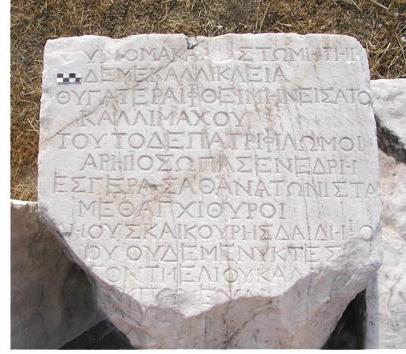An epigram is a separate genre of lyrical miniatures - a poem in which a person or a social phenomenon is ridiculed. The term comes from the Greek word epigramma, which literally means "inscription."
Custom Content Label
The epigram originated in Ancient Greece and initially was an inscription with any content on the goblet, vessel, portico of the temple or the elevated pedestal of the statue. In ancient Rome, the meaning of the poetic inscription changed; for the Romans, the epigram is a satirical poem. In ancient Greek poetry, the epigram arose in the 7-6th century BC.
The first classic of this genre is Simonides of Keos. This epic author is credited with many epigrams about the warriors of Greece and Persia. In the first century BC, the anthology of Greek epigrams was first created, which included about 4000 works sorted by subject. In the Middle Ages, in Latin literature, epigrams with ancient traditions continued their development - inscriptions on tombs, church objects and various buildings. Also, poetic epigrams were popular with Renaissance poets.
In European literature
The epigram in European literature is a small form of satire, from the distinguishing features of which one can clearly distinguish the specificity of the occasion. The first to start writing epigrams in Europe were French writers - Racine, Voltaire, Lafontaine, Rousseau. Somewhat later, this form spread to other genres of European literature.
In Russian literature
In Russian fiction, the epigram was clearly manifested in the work of poets of the 18th century: Bogdanovich, Lomonosov, Kheraskov, Kantemir and others. But it reaches the highest degree of development in the works of Dmitriev, Pushkin, Vyazemsky. During this period, the epigram is a review of individual political events, literary masterpieces, famous personalities, public figures. For the most part, they were not published, but remained in the manuscripts of the authors. Among the most prominent epigrammatic authors of the early 19th century are P. A. Vyazemsky, A. S. Pushkin, E. A. Baratynsky, S. A. Sobolevsky. Pushkin's epigrams were distinguished by their subtle satire, for example, written in F.V. Bulgarin, A.A. Arakcheev and A.N. Golitsyn. Although some of his creations in this genre carefully continued the ancient Greek tradition ("Curious", "Movement").

In the middle of the 19th century, the epigram (verses of a traditional type) recedes into the background, and the burning satirical poetry survives. Especially striking examples of it were created by V. S. Kurochkin, D. D. Minaev, M. L. Mikhailov, and N. A. Nekrasov. Later, many other prominent writers wrote epigrams: A. A. Fet, F. I. Tyutchev, A. N. Apukhtin, so-called secondary poets tried to prove themselves in this genre, there are isolated examples of epigrams written by prose writers - N. S. Leskov, F.M. Dostoevsky. In Soviet literature, S. Ya. Marshak, V.V. Mayakovsky, A. G. Arkhangelsky, Demyan Poor and many others often addressed the epigram.
From antiquity to modernity
Modern writers and poets also pay tribute to the epigram, which continues to spread among the masses not only in print but also orally. One of the most famous epigrammatists of our time is the outstanding actor Valentin Gaft. He is the author of an infinite number of poetic cartoons directed at his fellow actors. Gaft epigrams are sharp poetic attacks on domestic actors, films, and even political figures. The artist "swept" many, as the author himself says, "ate alive." The objects of his attacks were: Liya Akhedzhakova, Galina Volchek, Oleg Dal, Armen Dzhigarkhanyan, Vasily Lanovoi, Oleg Tabakov. After the release of the movie “Three in a boat, not counting a dog,” Gaft composed an epigram for Alexander Shirvindt, Andrey Mironov and Mikhail Derzhavin. Many openly resent the Gaft epigrams, including the family of Sergei Mikhalkov. The object of the gaftovsky satire was the picture "Three Musketeers" and Vladimir Zhirinovsky.

The epigram is one of the rarest, most unique genres, which, having originated in deep antiquity, has not been lost for several centuries, has survived to this day and is still popular, especially among satirists and parodists.